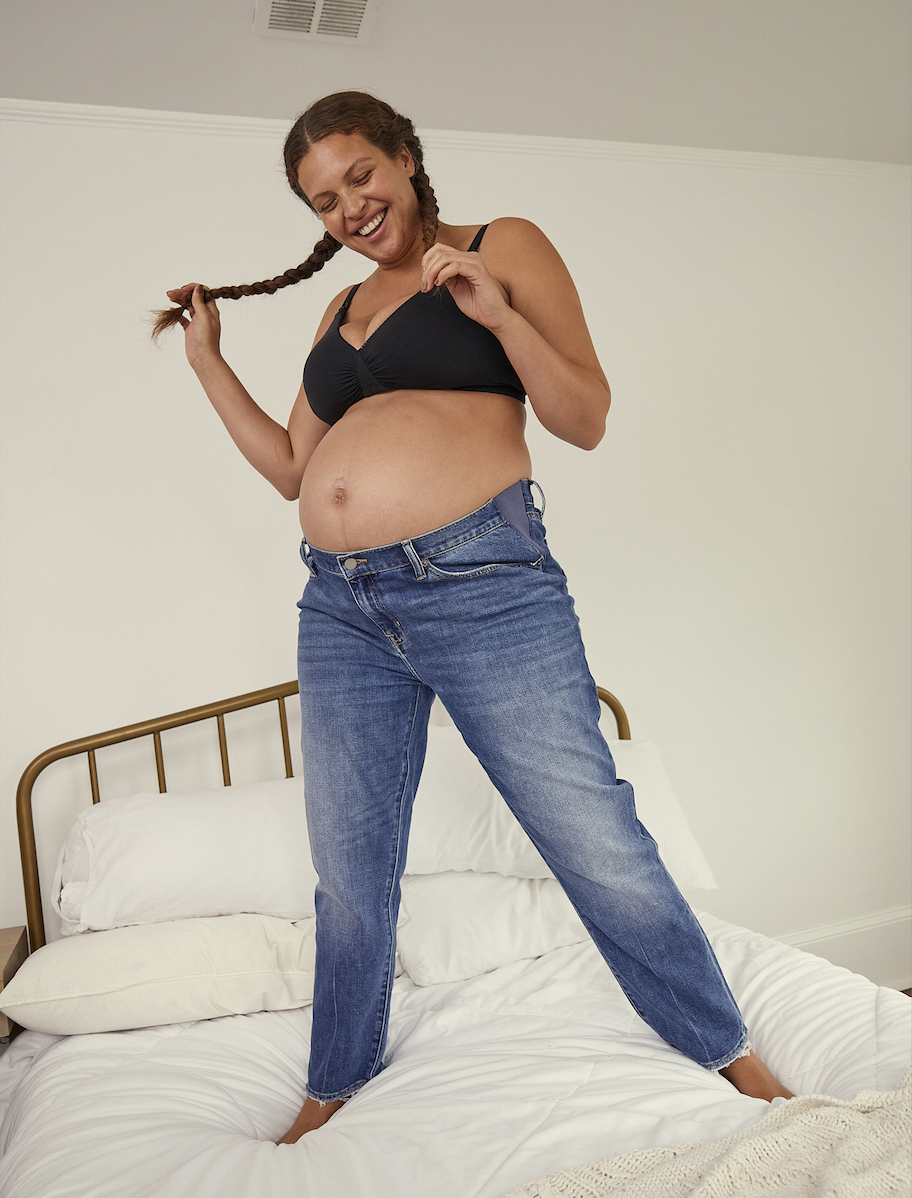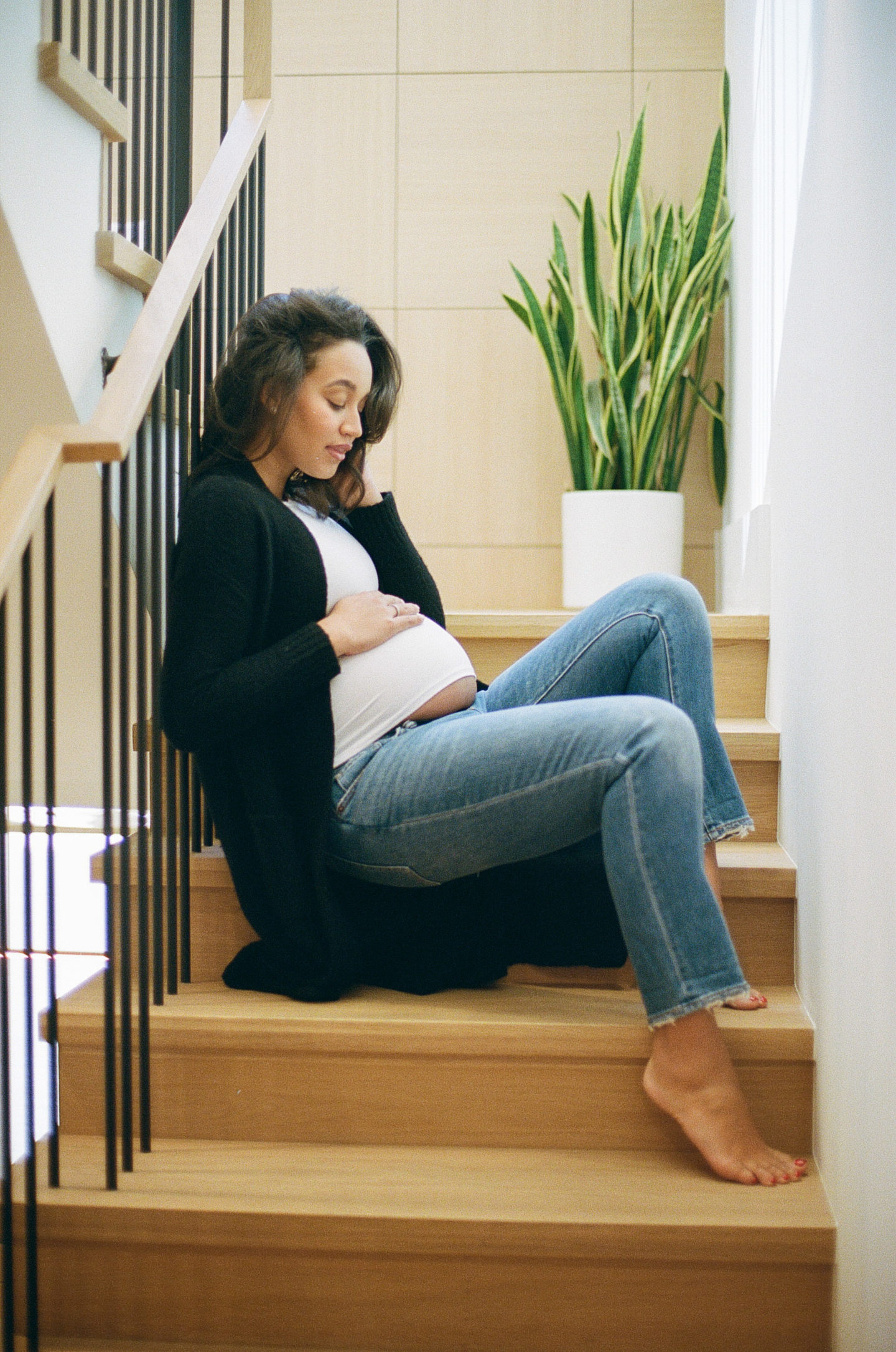You’re walking up the stairs when suddenly you notice a curious clicking sound with each step — and it’s not your chic high heels. Or maybe you bend forward to pick up a pair of socks off the floor, and a sharp pain shoots through the front of your pelvis. What gives?
It’s possible you may have Symphysis Pubis Dysfunction or SPD. SPD can be triggered by pregnancy, but it also can occur as a result of other conditions, such as osteoarthritis or a sports injury. Whatever the cause may be, you likely have questions, and we’ve got some answers.
Keep reading for everything you need to know about SPD below.
What Is Symphysis Pubis Dysfunction?
To answer this question, we first need to review what your pubic symphysis is (it’s been a long time since Anatomy 101!).
The pubic symphysis is the joint right between your left and right pelvic bones — think of it like the clasp on your favorite nursing bra, holding the left and right straps together. It’s located right under your pubis, about six to eight inches directly below your belly button.
Like all joints, the pubic symphysis is held in place and connected to the surrounding bones by ligaments. But if you’ve been pregnant before or know anything about joint pain during pregnancy, you know that ligaments are some of the first soldiers to fall when we get pregnant.
Once pregnant, one of the first things your body does is ramp up the production of a hormone called relaxin, which relaxes (duh) and loosens your ligaments to prepare for delivery. It makes sense: Nearly everything in your pelvic region has gotta stretch if that baby is ever going to come out!
This includes the ligaments holding your pubic symphysis in place. Sometimes, though, they become a bit too loose and allow additional movement of the pubic symphysis that can be painful. Enter Symphysis Pubis Dysfunction.
What Are the Symptoms of SPD?
Your likelihood of developing SPD, and the symptoms of SPD that you experience, depend a lot on individual and genetic factors. Your height, weight, body composition, and skeletal structure can all play a role, making it virtually impossible to predict whether you’ll experience SPD and what your symptoms may be like if you do.
In general, symptoms of SPD include:
- Pain — this can include mild discomfort, shooting pains in your pelvic region, or low back pain
- A clicking or grinding sound from your pelvic bone when walking or going downstairs
- Pain that worsens with certain movements, such as bending over, adjusting yourself in bed, or getting in and out of a car
- Fatigue with no clear source
- Trouble going to the bathroom; pain in your pelvic floor muscles while trying to go to the bathroom
If you’re experiencing one or more of these symptoms, we recommend calling your healthcare provider and scheduling an appointment to get it checked out. Even if you’re fairly confident that it’s SPD, it’s best to have a health professional rule out any other possible conditions.
How Is Pregnancy-Related SPD Treated?
Okay, so you’re pretty sure you have SPD — what can you do to get pain relief? Unfortunately, there isn’t a permanent fix to this sort of pelvic pain during pregnancy since it’s caused by hormone production that isn’t going to chill out until after you give birth. (On the bright side, you can rest assured knowing that there is an end in sight!)
Treatment options for SPD are more limited to pain management. Practices like physical therapy, pain medication, and self-care may help relieve strain and stress on your body and might be your front line of defense.
In fact, the first thing your doctor will likely do is direct you toward a physical therapist experienced with treating SPD who can provide manual therapy and stretches to help relieve the pain.
Physiotherapy
Physiotherapy can be intimidating, but it’s the best way to ensure that all of your joints are in working order, strengthen the muscles around your pubic symphysis, and relieve pain.
Your physiotherapist will likely have you do exercises to strengthen your pelvic floor, hips, abdominal muscles, and lower back. These exercises may include Kegels to support your pelvis and help reduce the hip pain caused by SPD.
Hydrotherapy
Your healthcare team might recommend that you do hydrotherapy, a type of physical therapy in which you exercise in a pool. This allows you to strengthen and stretch your joints and muscles without stressing them the way other exercises do. In some cases, a doctor of obstetric medicine may even recommend acupuncture or other forms of alternative medicine.
(P.S. – even if you aren’t experiencing SPD, throwing on your maternity one-piece and taking your workout to the pool can be a great way to minimize aches and pains during pregnancy without impacting your joints! )
Support Belts or Walking Aids
In cases of severe pain, your doctor might recommend using pain medication or supportive equipment, such as a pelvic support belt or crutches. They may also recommend treating the area with hot or cold compresses, which can help relieve pain.
SPD Risk Factors for Pregnant Women
Whether or not you experience SPD during pregnancy is largely out of your control. However, there are a few risk factors that may make it more likely for you to develop this condition.
If you’ve ever had a previous pelvic injury, such as a sports injury, you may be more likely to develop pelvic pain during pregnancy. The baby’s weight and position can contribute to pelvic pain, which may worsen the closer you get to your due date. Women predisposed to osteoarthritis may be more likely to develop SPD, as are women with a previous history of pelvic girdle pain (PGP).
The theme here is “totally out of your control.” The chance that you’ll develop SPD during pregnancy is almost entirely up to genetics and fate, so take a deep breath. This part of your pregnancy is out of your hands, and there’s no point in worrying or trying to control it.
Pelvic Pain During Pregnancy
Whether it fits into the description of pubic symphysis or not, pelvic pain during pregnancy may seem alarming. It’s easy to jump into a worst-case-scenario mindset when it comes to pain in your lower abdomen and pelvic region during pregnancy. After all, that’s where all the magic happens!
But the reality is that there are a ton of pregnancy symptoms that can cause pain south of your belly button, and most of them are nothing to worry about. Your uterus, pelvis, and abdominal walls are all stretching and moving around to make room for a baby, which can be painful.
Bloating and constipation are also standard parts of pregnancy and can contribute to tightness and pain near your belly, and so can round ligament pain.
Here’s an un-fun fact: The full list of generally innocuous reasons you may experience pelvic pain during pregnancy and postpartum is quite extensive:
- Growth spurts of the fetus or your uterus during the second or third trimester
- Pressure from the baby’s position on weight-bearing areas
- Digestive issues
- Round ligament pain
- Braxton-Hicks contractions
- Joint pain related to relaxin production
- And, of course, SPD
The first sign of pelvic pain while you’re expecting might have you panic-dialing your Ob/Gyn, but rest assured that 90% of the time, the cause is something normal. Definitely still call your doc. It’s best to get a health professional’s advice with any pain during pregnancy, especially if it’s accompanied by other symptoms like chills, a fever, or bleeding.
Just remember to take a deep breath while dialing, and know that what you’re experiencing is most likely something benign.
Have a Self-Care Moment for SPD Pain Relief
Dealing with pain as your pregnancy progresses — especially in the case of SPD, when so much of it is out of your control — can be difficult. One of our favorite ways to ease the burden of pregnancy aches and pains is by practicing self-care.
Sometimes self-care and pain management goes hand-in-hand – for instance, taking a warm bath with your favorite mama-safe Bath Soak can ease pain and help you relax and unwind.
Or maybe the benefit is solely to practice self-love during a tough night. In this case, you might try meditating, journaling, or practicing a relaxing ritual before bed.
However you choose to relax and care for yourself, it might help you in more ways than one. Studies have shown that self-care can ease stress, anxiety, and even chronic pain, especially in combination with other pain management strategies. Don’t be afraid to have a little self-care moment: You never know how much it may help you.
SPD: Painful but Temporary
SPD isn’t exactly a walk in the park, but at the end of the day, it’s temporary — after delivery, your body will start returning to its pre-pregnancy size and shape, and the related joint pain will fade to the background.
You might be going through it right now, but rest assured that this pain isn’t forever. Whatever you need to get through the aches, creaks, and pains or look like a 10/10 at your cousin’s wedding — HATCH is here to help.
Sources:







